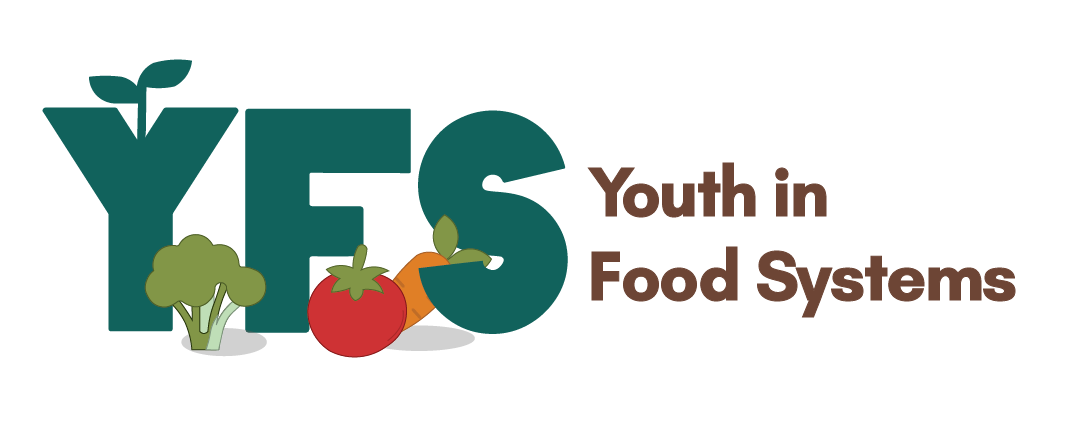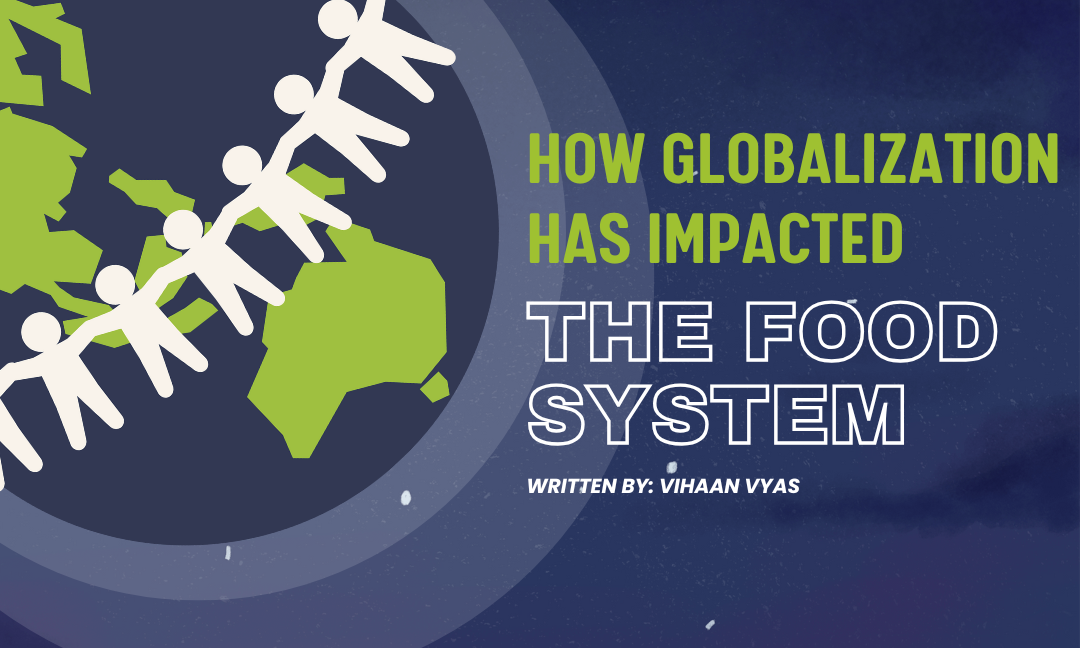Written by: Vihaan Vyas
Edited by: Eleanor Jeavons
Designed by: Andria Sahar
Published by: Rayna Almas
Introduction
Globalization has transformed the world in many ways, connecting people, ideas, and products across vast distances. One of the most noticeable areas where globalization has had an impact is the food system. Traditionally, food systems were shaped by geography, climate, and local culture. Today, however, they are part of a global network influenced by international trade, migration, technology, and multinational corporations. This blog post explores how globalization has impacted the food system through three main points: global food trade, dietary changes, and sustainability challenges.
1. Expansion of Global Food Trade
One of the most direct effects of globalization on food is the rapid growth of global trade in agricultural goods. Supermarkets now carry foods from around the world: bananas from Ecuador, rice from India, beef from Argentina, and avocados from Mexico. These changes have been made possible by advances in transportation, trade agreements, and global supply chains.
This global food trade has brought many benefits. Consumers have more variety, and prices for many items are lower due to economies of scale. Countries can specialize in crops that grow best in their climates and import the rest. For example, Canada exports grains and dairy while importing tropical fruits and spices that cannot grow in its cold climate.
However, this interconnectedness has also introduced new risks. Disruptions in one part of the world can lead to shortages or price hikes elsewhere. During the COVID-19 pandemic, for instance, many countries experienced delays in food shipments and rising prices due to labour shortages and closed borders. Similarly, political conflicts, such as the war in Ukraine, can interrupt exports of wheat or cooking oil and create ripple effects across continents.
2. Changing Diets: Homogenization and Hybridization
Globalization has also changed what people eat and how they eat. One major trend is dietary homogenization, or the spread of similar food preferences around the world. Global fast-food chains like McDonald’s, KFC, and Domino’s have become common in cities from New York to Nairobi. Processed foods and sugary beverages, often produced by multinational companies, have become staples in many countries.
This change can lead to the loss of traditional food cultures. In some regions, younger generations are more familiar with burgers and fries than with their traditional dishes. At the same time, the rise of processed foods has contributed to growing health issues, including obesity, diabetes, and heart disease, especially in countries undergoing rapid urbanization.
But, globalization has also encouraged the hybridization of diets; the blending of global and local cuisines. Migration, tourism, and cultural exchange have led to the creation of new fusion foods such as sushi burgers, butter chicken pizza, and Korean tacos. In multicultural societies like Canada, this blending of food traditions is often seen as a symbol of inclusion and creativity.
Still, the influence of large food corporations and the aggressive marketing of unhealthy products remain concerns, especially in lower-income countries where nutrition education and health infrastructure may be lacking.
3. Sustainability and Food Security
Globalization has also raised critical questions about sustainability and food security. The global demand for food has pushed many producers towards large-scale agriculture, which often involves monoculture farming, heavy pesticide use, and long-distance transportation. These practices contribute to environmental problems such as deforestation, water scarcity, soil degradation, and greenhouse gas emissions.
In addition, countries often produce export crops, like coffee, cocoa, or palm oil—at the expense of local food crops. This can undermine food sovereignty and make local populations more vulnerable to price swings in global markets.
However, globalization has also made it possible to share innovations and resources to address these challenges. International organizations and NGOs work to promote sustainable agriculture, organic farming, and climate-resilient crops. Technologies such as precision farming, satellite monitoring, and mobile apps are being used across borders to improve food production efficiency and reduce waste.
Conclusion
Globalization has fundamentally reshaped the way the world produces, trades, and consumes food. The growth of global food trade has increased access to diverse foods and supported economic growth. Changing diets have brought both culinary innovation and health concerns. Meanwhile, the environmental costs of global agriculture raise urgent questions about the future of food production.
As we move forward, the challenge is to ensure that globalization serves not just economic interests, but also public health, cultural preservation, and ecological sustainability. By promoting local food systems, ethical trade practices, and sustainable farming, we can build a global food system that is more resilient, inclusive, and respectful of both people and the planet.
Works Cited
Aday, Serpil, and Mehmet Seckin Aday. “Impact of COVID-19 on the Food Supply Chain.” Food Quality and Safety, vol. 4, no. 4, Oxford University Press (OUP), 24 Aug. 2020, pp. 167–180, doi:10.1093/fqsafe/fyaa024.
“CHALLENGES FACING THE FOOD SYSTEM.” Www.Futureoffood.Ox.Ac.Uk, https://www.futureoffood.ox.ac.uk/food-system-challenges. Accessed 22 June 2025.
jmcquaid. “The Russia-Ukraine War’s Impact on Global Food Markets: A Historical Perspective.” IFPRI, IFPRI, 15 Feb. 2024, https://www.ifpri.org/blog/russia-ukraine-wars-impact-global-food-markets-historical-perspective.
“Local Food Systems under Global Influence: The Case of Food, Health and Environment in Five Socio-Ecosystems.” Sustainability, vol. 15, no. 3, 1 Jan. 2023, https://www.mdpi.com/2071-1050/15/3/2376.
“Obesity and Overweight.” Www.Who.Int, https://www.who.int/news-room/fact-sheets/detail/obesity-and-overweight. Accessed 22 June 2025.
The State of Agricultural Commodity Markets 2024. FAO, 29 Nov. 2024, doi:10.4060/cd2144en.

